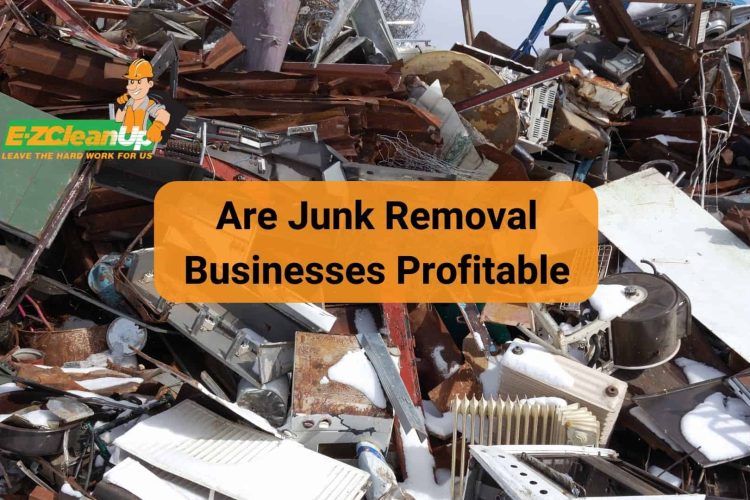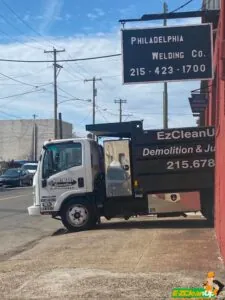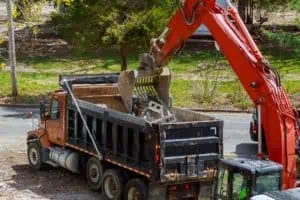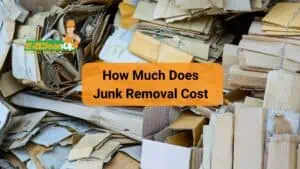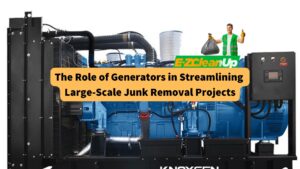Junk removal businesses are profitable, driven by increasing demand and different revenue sources. Profit margins vary based on factors like location and operational efficiency. The industry’s growth and adoption of eco-friendly practices also contribute to its profitability.
Learn more about “Are junk removal businesses profitable?” in the article below.
Current Market Trends in Junk Removal
The demand for junk removal services is strong, with approximately 29% of people utilizing them during moves, indicating their integral role in transitional life events. Households account for nearly 56% of junk removal jobs, with the rest coming from commercial sources, suggesting a significant demand from both residential and business sectors.
The primary customer demographic for junk removal services falls between 35 and 54 years of age, indicating a market concentrated among working adults and homeowners. This age group’s needs, such as downsizing or managing accumulated waste, drive a substantial portion of the industry’s demand.
Continuous Growth of the Industry
The industry has witnessed varied trends, including a yearly growth prediction of 2.3% for 2022, indicating steady expansion. The sector experienced some challenges during the great recession, with revenue falling significantly in 2008 and 2009. However, it has shown resilience and adaptability over time.
Technological advancements are shaping the future of junk removal. Innovations like near-infrared (NIR) spectroscopy for efficient sorting and RFID for tracking pickups are revolutionizing waste management. This adoption of technology positions the industry for further growth and efficiency.
Moreover, a growing trend toward environmentally friendly and charitable services, like recycling more waste or refurbishing appliances for donation, reflects a shift towards sustainability. This approach is becoming increasingly popular as a marketing and operational strategy in the industry.
Overview of the Junk Removal Industry
The junk removal industry has emerged as a crucial sector in waste management, underlined by its impressive growth and economic contribution. In the US, the industry generates a substantial annual payroll exceeding $10 billion and employs over 481,400 people, which highlights its significant role in the economy.
The global market value of waste management stands at a staggering $1 trillion annually. Notably, the industry in Canada is valued at over $3 billion, further emphasizing its substantial economic impact across North America.
With the average American producing about 4.9 pounds of trash per day, a significant portion of which could be serviced by junk removal companies, the industry plays a crucial role in managing the daily waste footprint of the population.
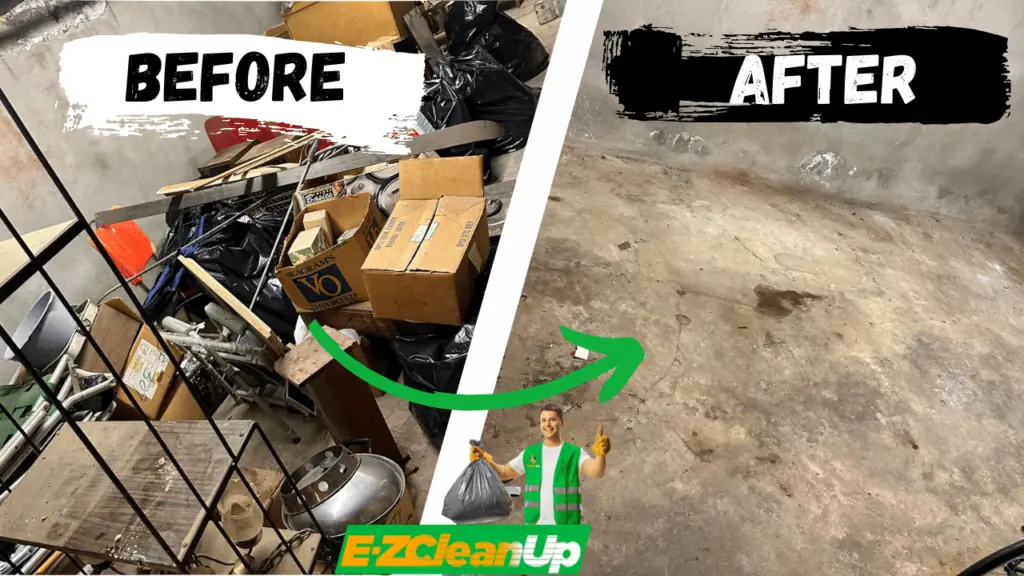
Core Services Offered by Junk Removal Businesses
Junk removal companies offer a variety of services, catering to both individual and commercial clients. They typically handle items like old vehicles, appliances, furniture, electronics, yard waste, and even entire structures. However, some items, especially hazardous materials like chemicals and asbestos, are excluded due to the need for special handling licenses.
The services can vary based on the type of junk removal business, such as municipal waste services, professional junk removal, recycling plants, and donation centers. Each type has its specific focus.
For instance, municipal waste services deal with daily waste disposal, while professional junk removal businesses might handle a broader range of junk, including commercial and construction waste.
Revenue Streams in Junk Removal
Several factors influence the revenue in the junk removal industry. The average job cost in the industry is around $350, with the total gross expense percentage of income at 41%, which translates to an average expense per job of $143.50.
Pricing is typically determined by the volume of junk removed, but additional fees may apply for heavy items, hazardous materials, and rush jobs. Specialized services targeting items like outdated appliances or electronics can also be lucrative revenue streams.
Moreover, selling scrap metal from the junk collected can be highly profitable, with materials like copper and brass fetching good prices in the market.
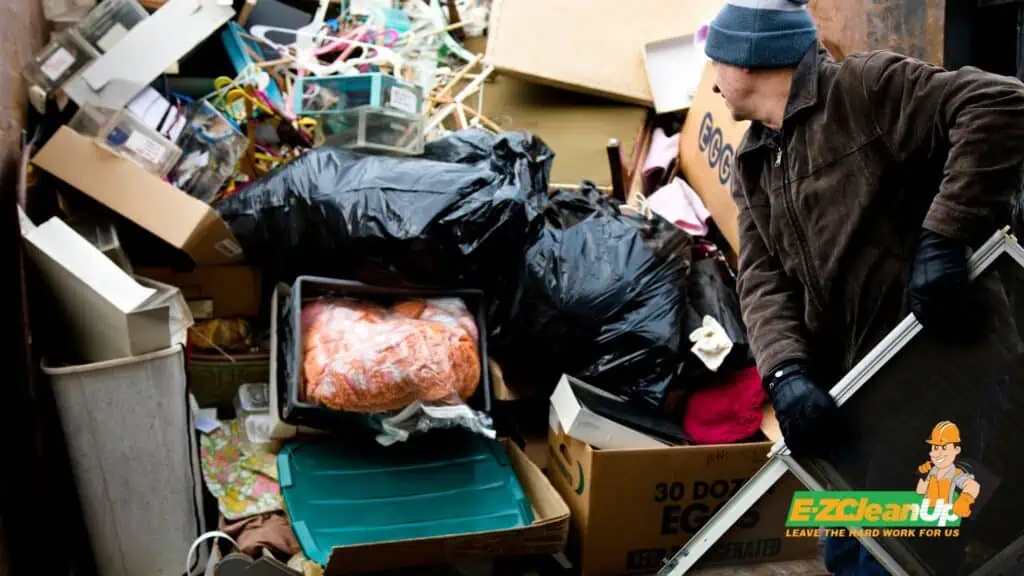
Operational Costs and Expenses
Starting and scaling a junk removal business involves various costs and expenses. These include the costs of acquiring the necessary permits and equipment and, potentially, expenses related to registering the business and creating a business plan. Junk removal companies typically have low overhead and operating costs, especially those operated by private contractors with a single vehicle.
However, as the business scales up, costs associated with adding more trucks and employees, as well as marketing and advertising expenses, will rise. It’s also important to maintain profitable pricing while managing the time and labor invested in sorting and breaking down items for minimal returns.
Calculating Profit Margins in Junk Removal
Calculating profit margins in the junk removal industry involves subtracting the total gross expenses from the revenue and dividing the result by the revenue. For example, if the average job cost is $350 with a gross expense of $143.50 per job, the gross profit per job is $206.50.
The gross expenses generally include fuel costs (5-7% of gross income), labor (about 20% for two crew members), disposal fees (8-11%), automobile expenses (around 3%), and credit card fees (about 2%). The total gross expense percentage of income is approximately 41%.
Factors Impacting Profitability
Several factors can impact the profitability of a junk removal business. These include:
- Location: Urban areas with higher densities offer more opportunities for business growth and higher profit margins compared to rural areas.
- Competition: High competition can lead to pricing pressure and lower profit margins.
- Pricing Strategy: Companies with premium pricing based on value-added services may achieve higher profit margins.
- Operational Costs: Factors such as labor costs, equipment maintenance, fuel expenses, and disposal fees contribute to overall operational costs and profit margins.
- Cost of Customer Acquisition: Initially high but tends to decrease over time as repeat customers and referrals increase.
- Insurance and Licensing Costs: These are necessary expenses for legal operation and protection against accidents or damage claims, which can vary but typically range from $2,000 to $5,000.
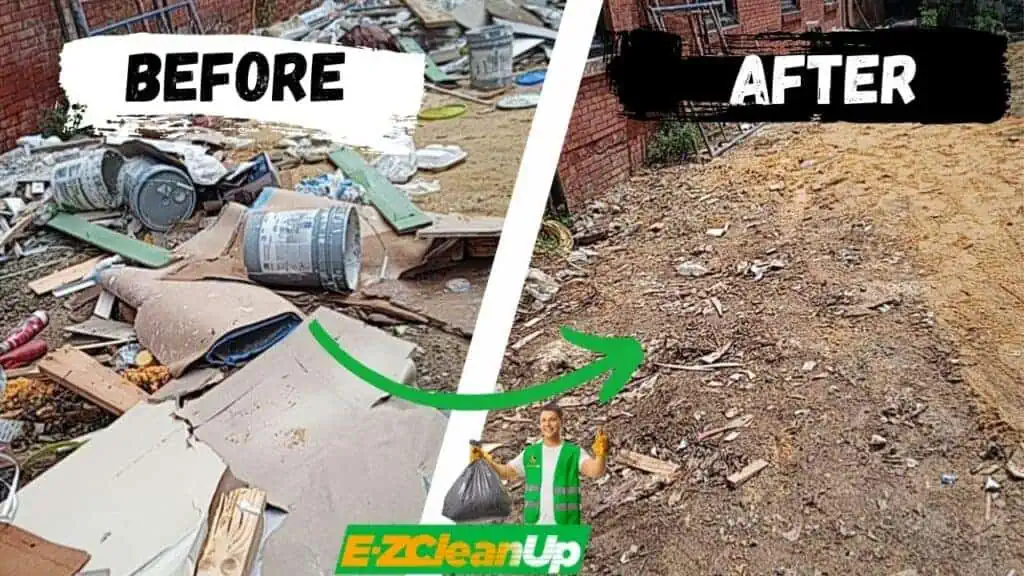
A Look into the Factors that Made Junk Removal Businesses Successful
Case studies of successful junk removal businesses can provide insights into different strategies for profitability. For instance:
- A company in a highly competitive urban area focusing on high-volume, low-cost bulk removal may operate with a profit margin of around 15%.
- Another company in a suburban area with moderate competition using a value-added pricing strategy may achieve a profit margin of 25%.
- A business in a rural area with limited competition and a smaller customer base might have a profit margin of approximately 20%.
These examples illustrate how business models and market conditions can significantly influence profitability. Successful junk removal businesses often focus on differentiating their services, managing operational costs effectively, and adapting their strategies to the specific demands of their target markets.
Opportunities for Growth and Expansion in the Junk Removal Industry
Exploring niche markets is a strategic way to grow in the junk removal industry. Some potential niches include:
- Serving real estate investors and landlords who often require junk removal for properties they acquire or manage.
- Working with contractors and construction companies, which may prefer specialized junk removal services over traditional dumpster rentals.
- Catering to movers, especially in affluent neighborhoods, where there is a demand for comprehensive, hands-off junk removal services.
- Targeting rural residents who lack regular trash pickup services. This is an underserved market and can be a viable niche, though pricing should consider the lower income levels and added travel distances in these areas.
A Smart Side Hustle for Students
Starting a junk removal business can be an excellent side hustle for students, all you need is a pickup truck! It’s a not-too-hard way to earn money while managing your schedule around classes. By tackling small junk removal jobs, students can gradually build a business that helps pay off student loan debt quickly. This approach not only provides financial relief but also offers a very valuable entrepreneurial experience.
Leveraging Technology for Efficiency
The use of technology can significantly enhance efficiency in junk removal operations. Some examples of how technology can be leveraged include:
- Implementing recycling services alongside regular junk removal.
- Utilizing special equipment or trucks that can access challenging locations.
- Acquiring licenses for the removal of toxic and hazardous waste.
- Using digital tools and software for better waste management, route optimization, and operational efficiency.
Sustainability and Eco-Friendly Practices in the Junk Removal Industry
The junk removal industry plays a significant role in environmental sustainability. Traditional junk removal often leads to landfill accumulation, which contributes to greenhouse gas emissions like methane and causes soil and water contamination.
A key aspect of eco-friendly junk removal is recycling and proper waste management. Companies have begun implementing efficient waste sorting and recycling processes. For instance, materials like metal, plastic, and electronics are sorted and diverted to appropriate recycling vendors instead of being sent to landfills.
Additionally, upcycling is gaining traction, where unwanted items are transformed into valuable products. Recycling minimizes landfill waste and supports the circular economy, where materials are reused and repurposed.
Building a Sustainable Brand in Junk Removal
To build a sustainable brand, junk removal companies are increasingly focusing on several strategies:
- Efficient truck routing using GPS-enabled software to minimize fuel consumption and reduce carbon footprint.
- Donation of usable items to local charities to extend their lifecycle and support local communities.
- Utilization of track and trace data for sustainability reporting that helps businesses measure and report their sustainability performance.
- Employee training on sustainable practices, including waste sorting, recycling, and landfill diversion.
- Leveraging technology and innovation, such as AI for efficient sorting and automation, and using sustainability bins for efficient material diversion.
Predictions for the Future of the Industry
The junk removal industry is expected to continue growing, with the potential for increased profitability. Key strategies for maximizing profitability include targeting profitable market segments, implementing efficient pricing strategies, streamlining operations, and investing in marketing and advertising.
For entrepreneurs looking to start or grow a junk removal business, it is essential to conduct thorough market research and develop a comprehensive business plan. You should also be prepared to face the challenges such as competition, safety concerns, fluctuating disposal costs, and regulatory compliance.
Building a strong online presence, offering flexible scheduling options, and establishing strategic partnerships can greatly aid in attracting and retaining customers. As the industry evolves, staying adaptable and innovative will be crucial for long-term success.
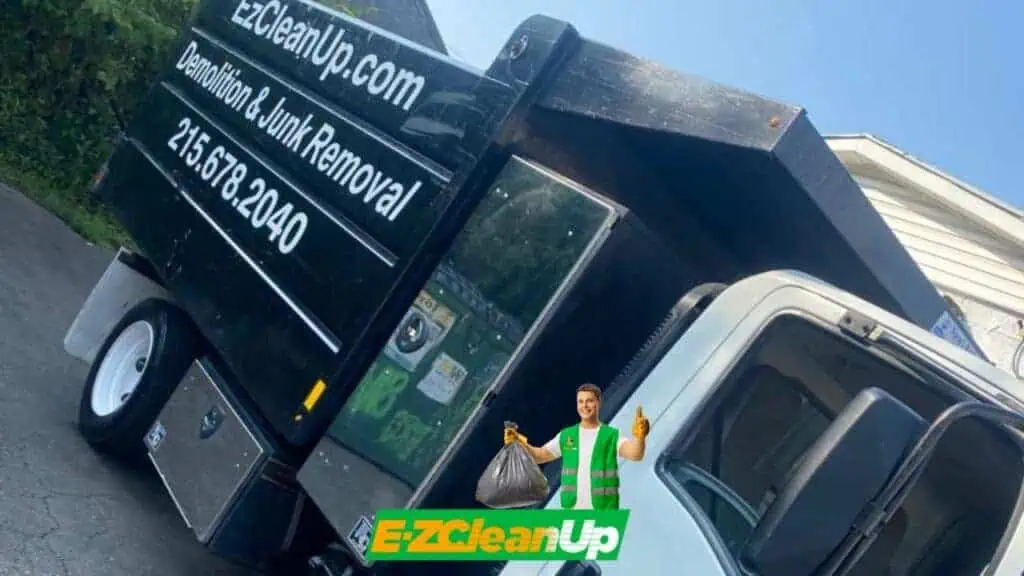
EZ CleanUp: Pioneering Profitability in Junk Removal
In an industry where profitability depends on efficient and sustainable operations, EZ CleanUp stands out as a leader in the Philadelphia area. Our company exemplifies how junk removal services can be both financially viable and environmentally responsible.
We pride ourselves on offering competitive pricing without hidden fees, making our services accessible to a broader demographic. Our eco-friendly mission is integral to our operations. We go beyond mere disposal. We focus on recycling and donating viable items.
While junk removal is our forte, our services extend to dumpster rentals, demolition, clearing-out services, and even buying and selling junk cars for cash. We provide comprehensive solutions tailored to your specific requirements.
Partner with us for a cleaner, greener, and more organized space. Call us now, and let’s talk business.

